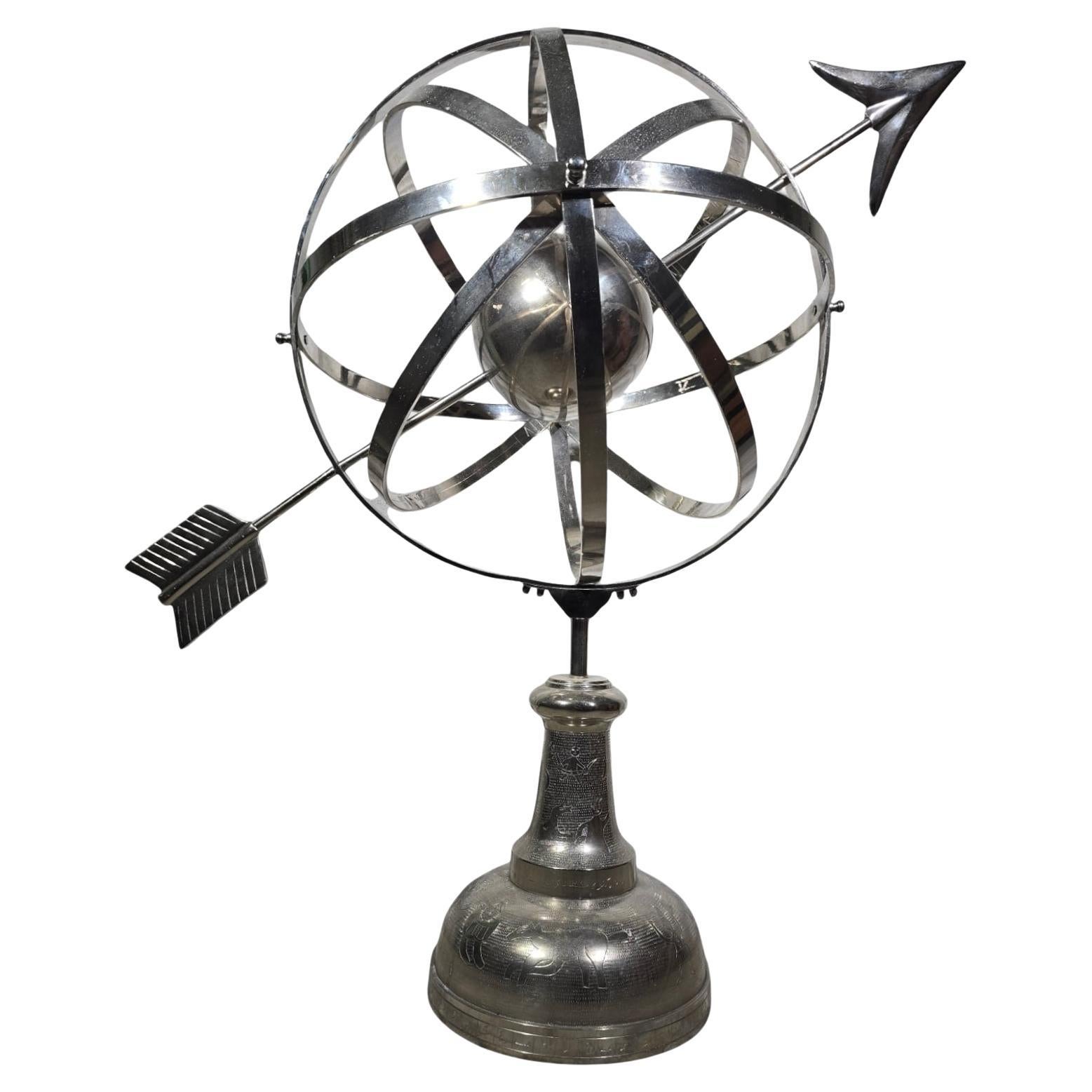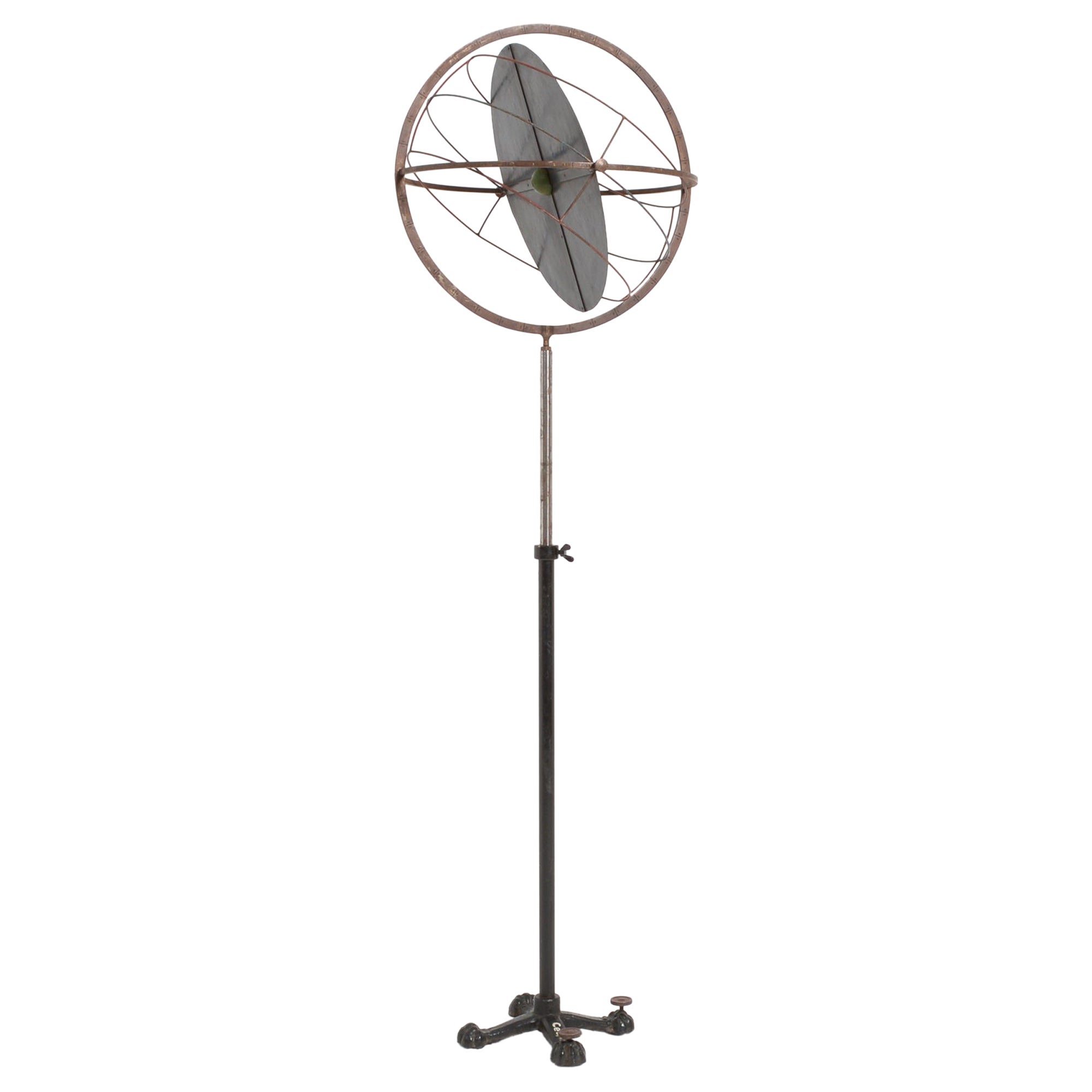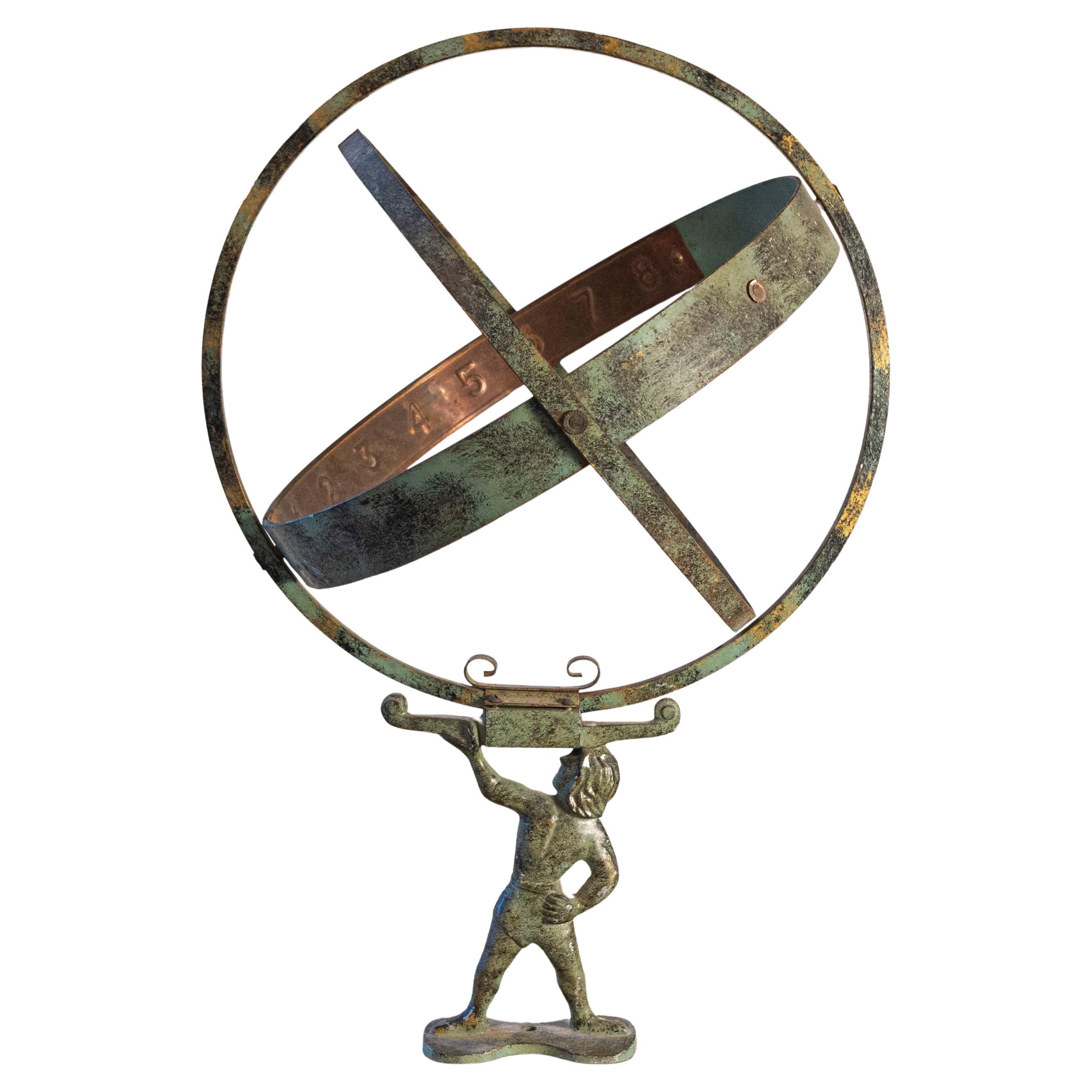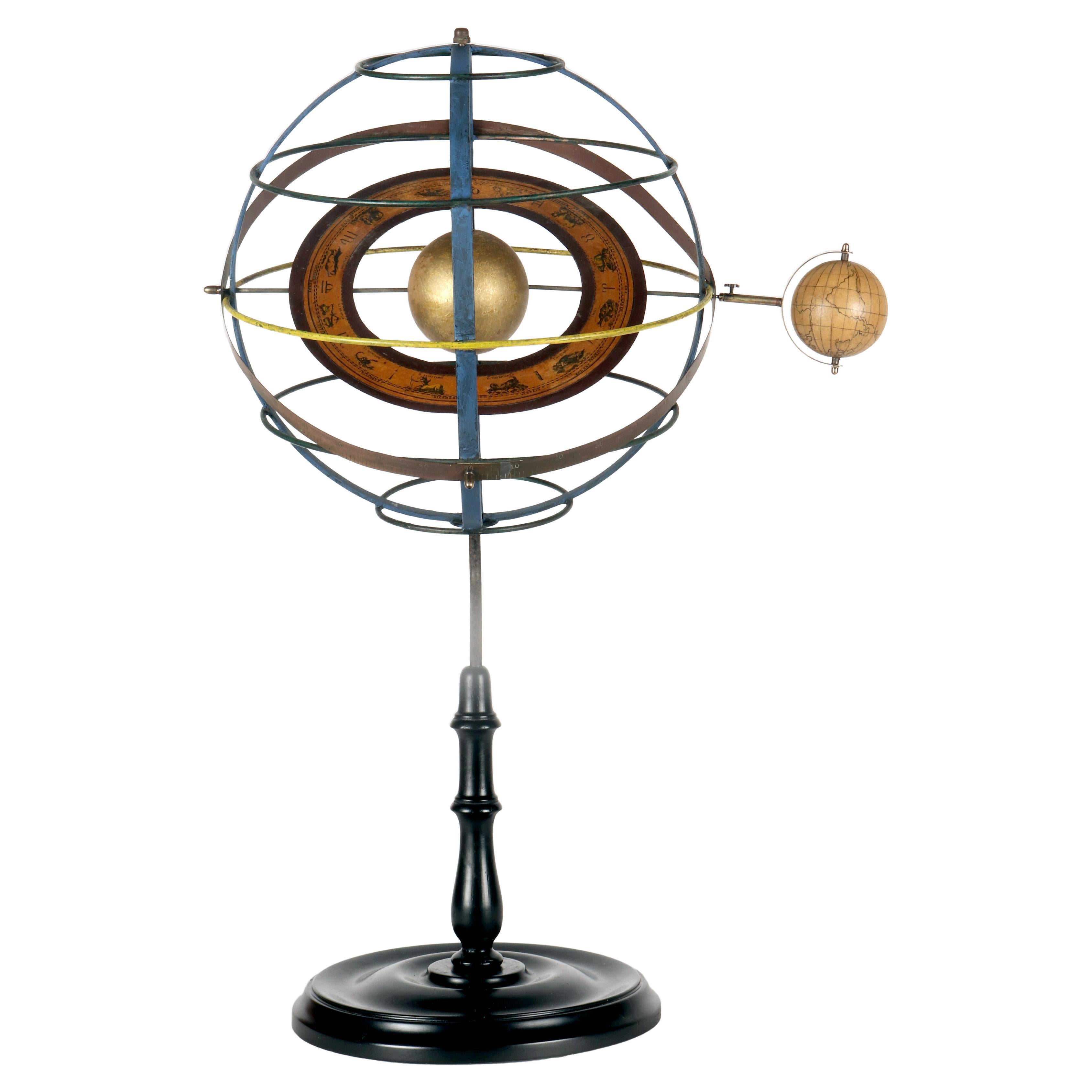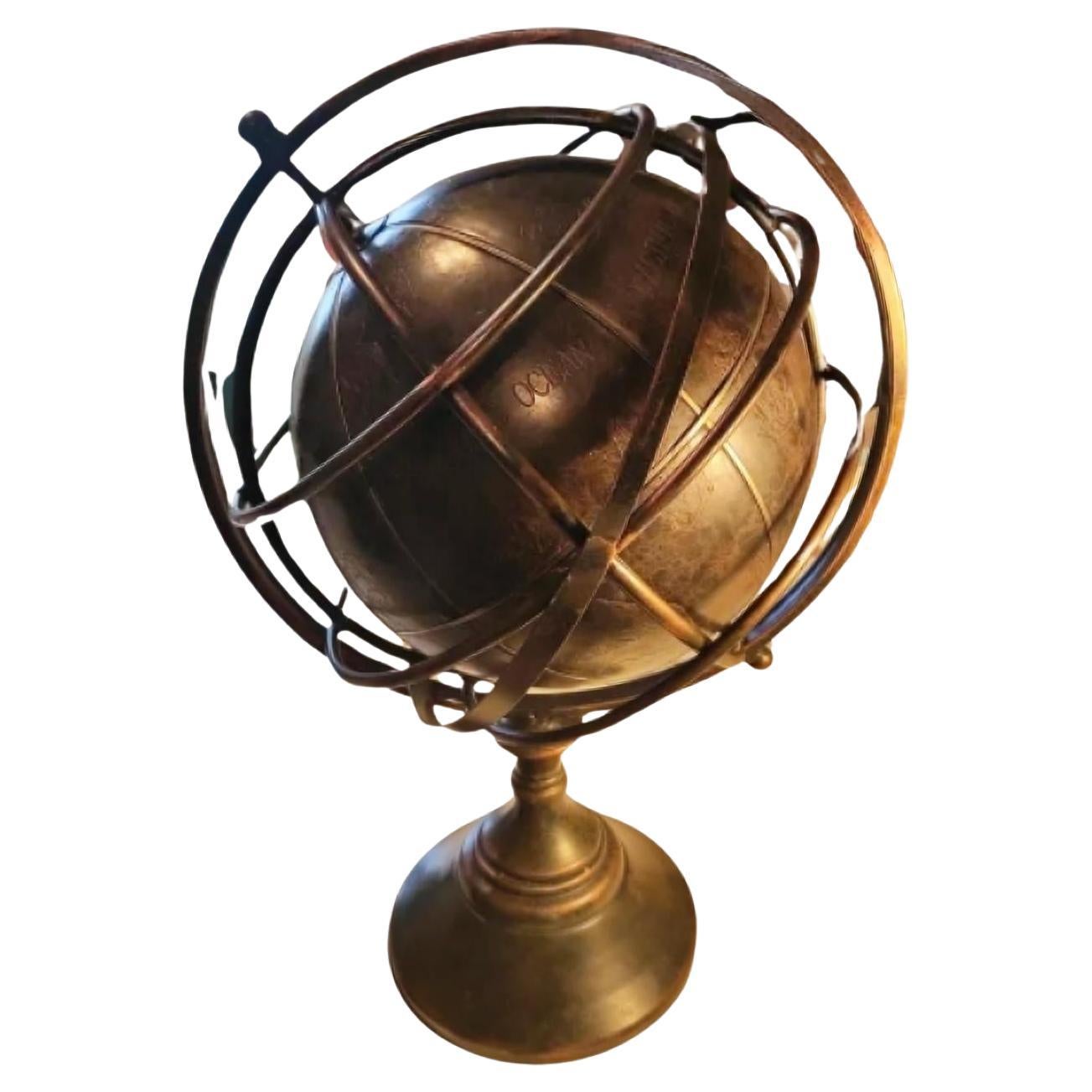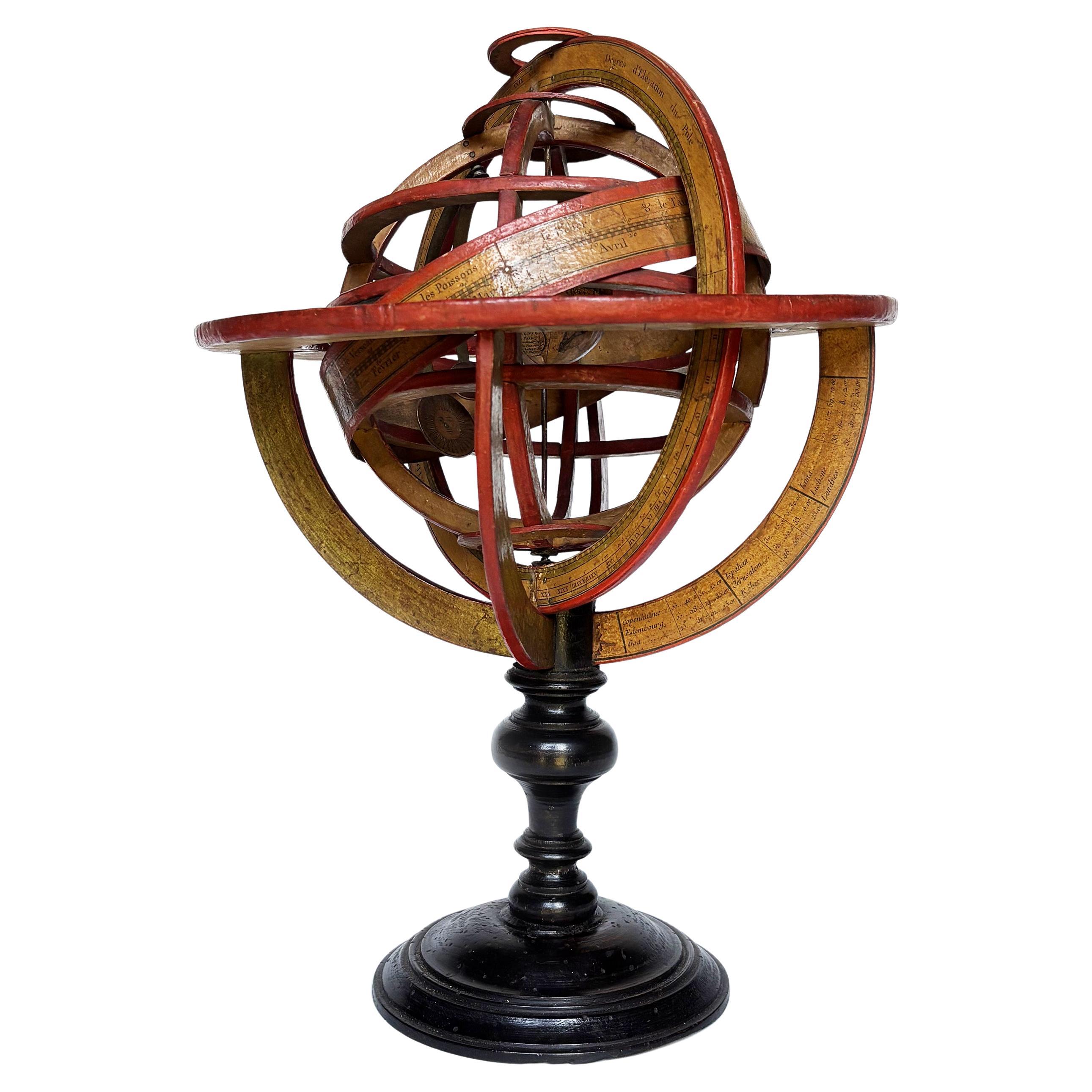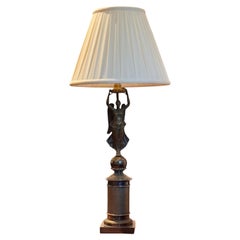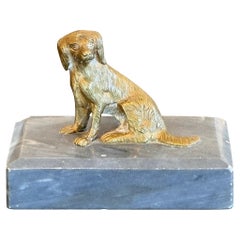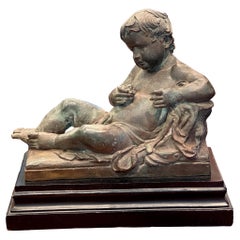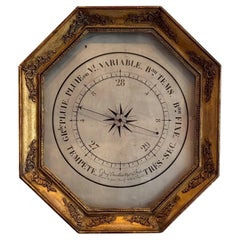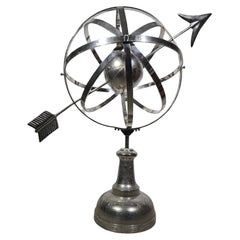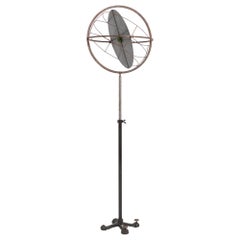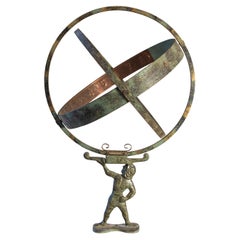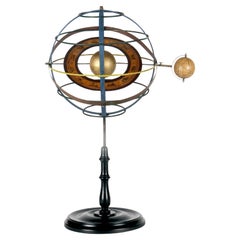Items Similar to Bronze Bronze Armillary Sphere With Zodiac Base With Zodiac Base
Want more images or videos?
Request additional images or videos from the seller
1 of 9
Bronze Bronze Armillary Sphere With Zodiac Base With Zodiac Base
$695
£533.73
€611.65
CA$978.39
A$1,096.01
CHF 570.06
MX$13,369.07
NOK 7,257.65
SEK 6,843.44
DKK 4,565.17
About the Item
Vintage bronze armillary sphere featuring classic interlocking rings, arrow axis, and a detailed circular base adorned with zodiac motifs. The patinated finish adds depth and character to this decorative astronomical form.
About the Seller
No Reviews Yet
Vetted Professional Seller
Every seller passes strict standards for authenticity and reliability
Established in 1985
1stDibs seller since 2024
50 sales on 1stDibs
Typical response time: 2 hours
- ShippingRetrieving quote...Shipping from: Charlottesville, VA
- Return Policy
Authenticity Guarantee
In the unlikely event there’s an issue with an item’s authenticity, contact us within 1 year for a full refund. DetailsMoney-Back Guarantee
If your item is not as described, is damaged in transit, or does not arrive, contact us within 7 days for a full refund. Details24-Hour Cancellation
You have a 24-hour grace period in which to reconsider your purchase, with no questions asked.Vetted Professional Sellers
Our world-class sellers must adhere to strict standards for service and quality, maintaining the integrity of our listings.Price-Match Guarantee
If you find that a seller listed the same item for a lower price elsewhere, we’ll match it.Trusted Global Delivery
Our best-in-class carrier network provides specialized shipping options worldwide, including custom delivery.More From This Seller
View AllBronze Lamp With Figural Column Base
Located in Charlottesville, VA
Elegant bronze lamp featuring a finely cast winged female figure atop a cylindrical base with textured detailing and stepped plinth. The classical form and patinated finish highlight...
Category
Vintage 1920s French Table Lamps
Materials
Bronze
Bronze Dog on Marble Base
Located in Charlottesville, VA
Dog lovers delight. A handsome spaniel.
Category
Vintage 1920s Animal Sculptures
Materials
Marble, Bronze
Late 19th Century Bronze Putti Sculpture on Base
Located in Charlottesville, VA
A reclining Putti on raised base
Category
Antique Late 19th Century French Figurative Sculptures
Materials
Bronze
Early 19th Century French Barometer
Located in Charlottesville, VA
This elegant 19th-century French barometer is a beautifully crafted antique weather instrument housed in an octagonal giltwood frame. The a...
Category
Antique Early 19th Century French Scientific Instruments
Materials
Giltwood, Paint
Vintage Metal Wire Basket With Solid Base
Located in Charlottesville, VA
Old wire basket with looped sides and a solid metal bottom. Worn finish with a simple, sturdy look.
Category
Vintage 1950s French Decorative Baskets
Materials
Wire
Napoleon III Style Settee With Skirted Base
Located in Charlottesville, VA
Compact upholstered settee in the Napoleon III style, featuring a rounded back, flared arms, and tailored silhouette. Upholstered in a geometric patterned fabric with a full fringe s...
Category
Vintage 1920s French Settees
Materials
Upholstery
You May Also Like
Large Silvered Bronze Armillary Sphere – 1950s AND 115 C
Located in Madrid, ES
This impressive, large armillary sphere from the 1950s is a beautiful representation of celestial design, crafted from silvered bronze with intricate hand-engraved zodiac symbols. St...
Category
Vintage 1940s Scientific Instruments
Materials
Bronze
Exclusive Antique Armillary Sphere
Located in Vlimmeren, BE
An armillary sphere is a model of objects in the sky consisting of a spherical framework of rings, centred on the Earth or the Sun, that represent lin...
Category
Antique Mid-19th Century European Industrial Scientific Instruments
Materials
Metal
French Late 19th Century Bronze Armillary Sphere Depicting the Titan Atlas
Located in Atlanta, GA
A French bronze armillary sphere depicting Atlas carrying the world from the late 19th century with verdigris patina. Created in France during the last quarter of the 19th century, t...
Category
Antique Late 19th Century French Scientific Instruments
Materials
Bronze
A Copernican armillary sphere, Paravia, Milan, Italy 1930
Located in Milan, IT
A Copernican armillary sphere made of iron, paper, brass and wood, with the Sun inside, and the Earth on the outside, made of wood and covered with paper. Pedestal made of turned and...
Category
Mid-20th Century Italian Scientific Instruments
Materials
Brass, Iron
Rare English Nautical Globe with Armillary Sphere (1930) 20th Century
Located in Madrid, ES
Rare English Nautical Globe with Armillary Sphere (1930) 20th Century
Good condition
magnificent globe, with a leather-covered wooden interior terrest...
Category
Early 20th Century English Modern Nautical Objects
Materials
Metal
$1,418 Sale Price
20% Off
Ptolemaic Armillary Sphere, Charles-François Delamarche, Paris, ante 1798
By Charles Francois Delamarche
Located in Milano, IT
Ptolemaic armillary sphere
Charles-François Delamarche
Paris, ante 1798
Wood and papier-mâché
covered with printed and partly hand-colored paper
It measures 16.37 in in height x Ø 10.94 in (41.60 cm - Ø 27.80 cm)
It weights 2.33 lb (1,058 g)
State of conservation: consistent with its age and use, the paper shows some signs of use, stains and abrasions.
The sphere is Ptolemaic, with the Earth placed at its center, surrounded by the Moon and the Sun mounted on two metal arms.
The sphere is composed of six horizontal and two vertical rings (armillae), each bearing graduations and its own name.
The first horizontal ring is illegible. The others, in descending order are: North Pole, Tropic of Cancer, Equator, Tropic of Capricorn, South Pole.
The vertical rings consist of two double meridians.
The sphere is then connected to the large meridian by two pins, a vertical ring inserted perpendicularly into the circle of the Horizon, in turn supported by four semicircles connected to the turned and black-stained wooden base.
Each element is covered with printed paper. It contains various pieces of information: latitudes, length of days, names and zodiac symbols, calendar, wind directions, etc.
The vertical circles mention the latitudes and longitudes of different cities: Rome, Bordeaux, Madrid, Boston, Batavia (Jakarta), Acapulco, etc.
Even the small terrestrial globe is covered with printed paper: continents and oceans appear with numerous geographical markings indicating the most recent explorations.
In the Pacific Ocean, west of South America bears the following inscription:
GLOBE
TERRESTRIAL
à Paris
chez Delamarche Géog
Rue du Foin Jacques
Au Collège de
M.e Gervais
The North American coasts are well delineated and California appears correctly as a peninsula - reports from Spanish explorers in the region had given rise to confusion as to whether it was connected to the mainland or not. The geographical nature of California was confirmed after the explorations of Juan Bautista de Anza (1774-1776).
Alaska is not described and is only partially traced; it would become part of the United States in 1867.
Various Pacific islands are indicated.
Australia (the name definitely used from 1824) is called "Nouvelle Hollande."
Tasmania is still represented as a peninsula and this is an important detail for the dating of our armillary sphere.
The island is separated from Australia by Bass Strait, which was crossed by Matthew Flinders for the first time in 1798, showing that it was not a peninsula. Delamarche certainly would not have waited a long time to update such an important geographical datum: presumably he did so shortly after receiving the news.
Charles-François Delamarche (1740-1817) founded his laboratory around 1770 and, in a few years, he became the most famous French cartographer and globe maker between the 18th and 19th centuries. After having acquired the laboratory of the late Didier Robert de Vaugondy (1723-1786; himself a renowned cartographer who continued the family business founded by his grandfather Nicolas Sanson in the seventeenth century) and after having purchased, between 1788 and around 1800, the businesses of Jean-Baptiste Fortin (1750-1831) and Jean Lattré (around 1750-1800), he began to call himself "Successeur de MM. Sanson and Robert de Vaugondi, Géographes du Roi and de M. Fortin, Ingénieur-mécanicien du Roi pour les globes et les sphères."
Thus, at the end of the eighteenth century, Delamarche possessed the warehouse stocks, as well as the manufacturing skills of the globes of his main rivals in Paris.
In addition to this aggressive acquisition policy, the key to its success also lay in the combination of high-quality cartography combined with extremely attractive globes and armillary spheres; and, of course, its famous red paint finishing touch.
His laboratory was located on Rue de Foin St Jacques "au Collège Me. (or "Mtre") Gervais" in the Latin Quarter of Paris until around 1805, when he moved to rue du Jardinet No. 13.
On the death of Charles-François in 1817, the reins of the company passed to his son Félix (1779-1835), who continued to publish, often in collaboration with the engraver Charles Dien, Sr. In 1835 the company first moved to rue du Jardinet No. 12 and a little later to rue du Battoir No. 7.
Bibliography:
Dekker, Elly, et al. Globes at Greenwich...
Category
Antique 1790s French Other Scientific Instruments
Materials
Wood, Paper
